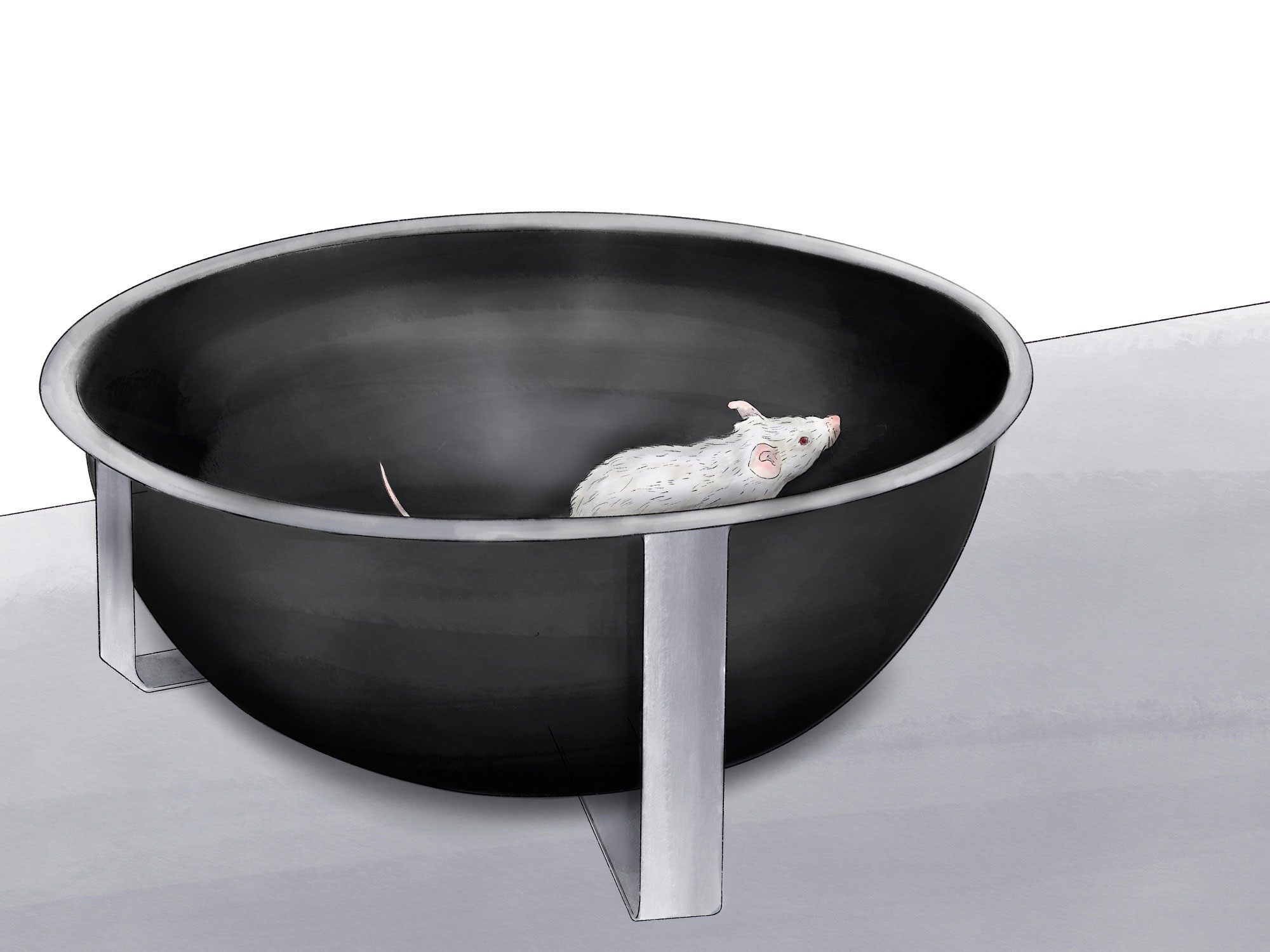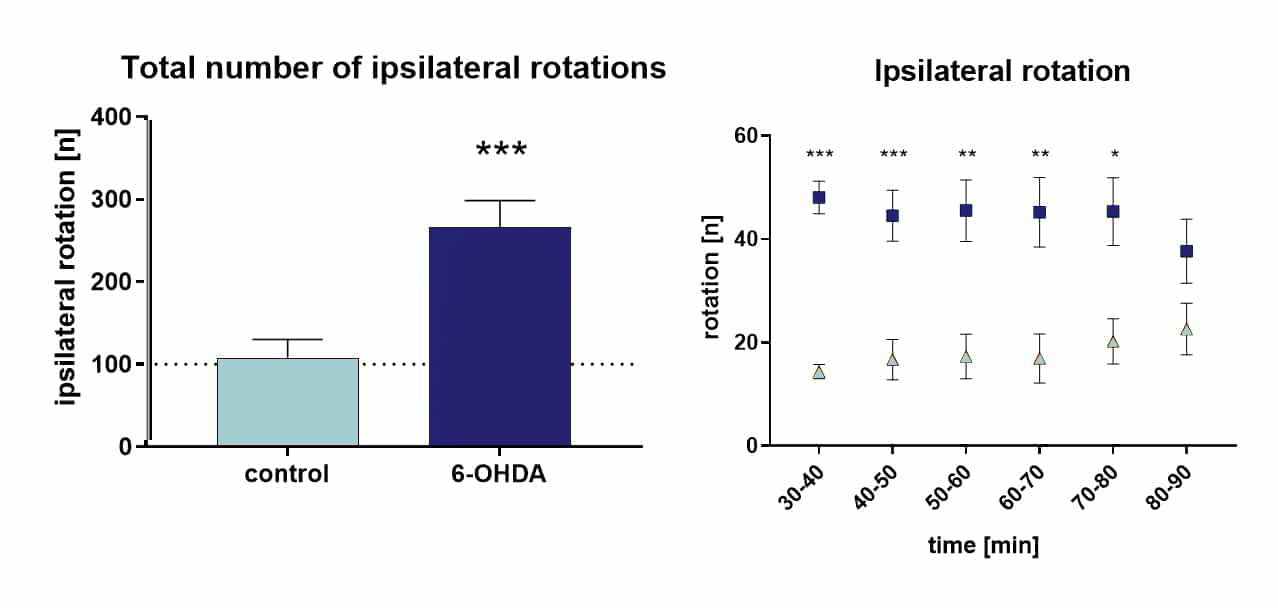The rotation test is aimed at the identification of dopamine imbalance between the right and left brain hemisphere in animals with a lesion of the nigrostriatal pathway – most commonly 6-OHDA lesions. When dopamine agonists or antagonists are administered to the unilaterally lesioned animals, they vigorously turn in circles for the duration of drug activity. This yields a reliable and easily quantifiable measure of the lesion severity.
The selection of the drug, dosing, time frame, and testing protocol depends on the goal of the experiment, as rotation test offers various applications. For example, it can be used as a screening tool to determine the extent of the lesion or as a test aimed at testing a candidate therapeutic aimed at modification of the L-DOPA treatment. The rotation test is very popular due to its easy application. However, proper planning and interpretation are very important to prevent misinterpretation of results. It is important to note, that rotations induced with different agents – e.g., amphetamine and apomorphine, are poorly correlated and serve different purposes.
The rotometer bowl is a hemisphere with a 50 cm diameter. In this apparatus, a unilaterally lesioned animal is more likely to show rotation behavior compared to, for example, the open field apparatus. The animal is placed in the rotometer bowl and its behavior during the test session is videotaped. The test is performed under standard light illumination. Clockwise and counterclockwise rotations are automatically counted with a tracking system. When untreated lesioned animals are placed in the bowl, they will also rotate due to the surge of dopamine in the novel environment. However, while untreated animals stop rotating after approximately 5 minutes, animals treated with a dopaminergic agent will rotate for the whole duration of drug activity.
The rotation test is commonly used in combination with the cylinder test, the corner turn test, and ALO score.


Figure: Amphetamine-induced ipsilateral rotations. Three weeks after surgery all treatment groups were tested in the amphetamine-induced rotation task. Left graph shows differences between groups in the total number of rotations. Mann-Whitney test, ***p<0.001. In the right graph the number of rotations are presented in 10 minutes intervals. Two-way ANOVA followed by Bonferroni post hoc ***p<0.001, ** p=0.01, *p=0.05. Mean + SEM.
